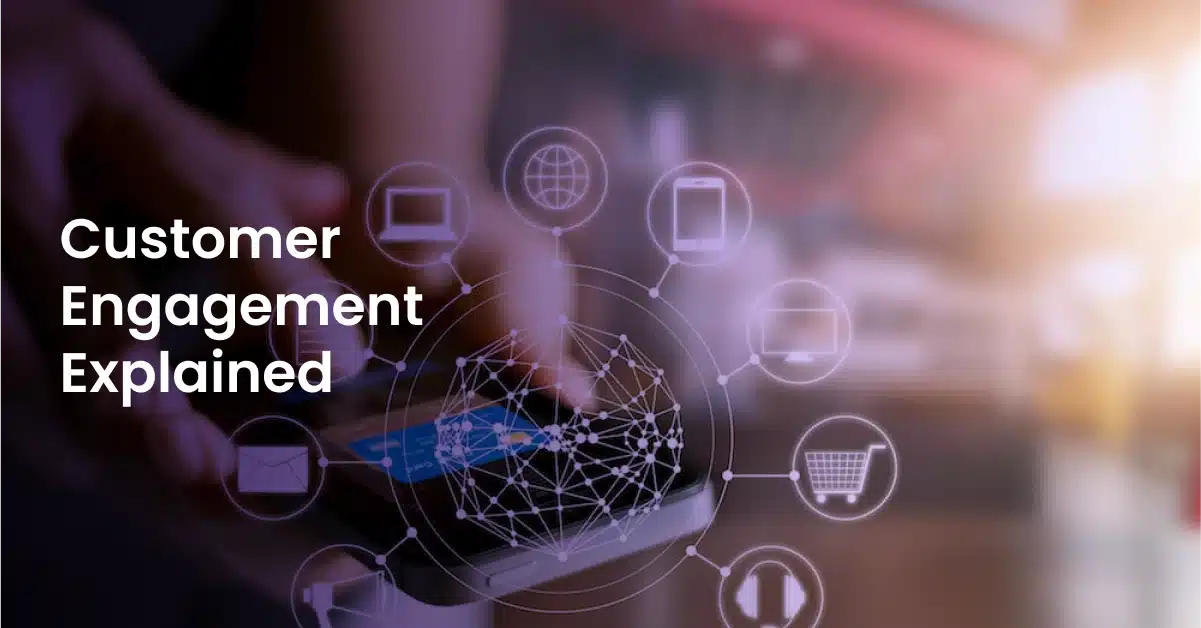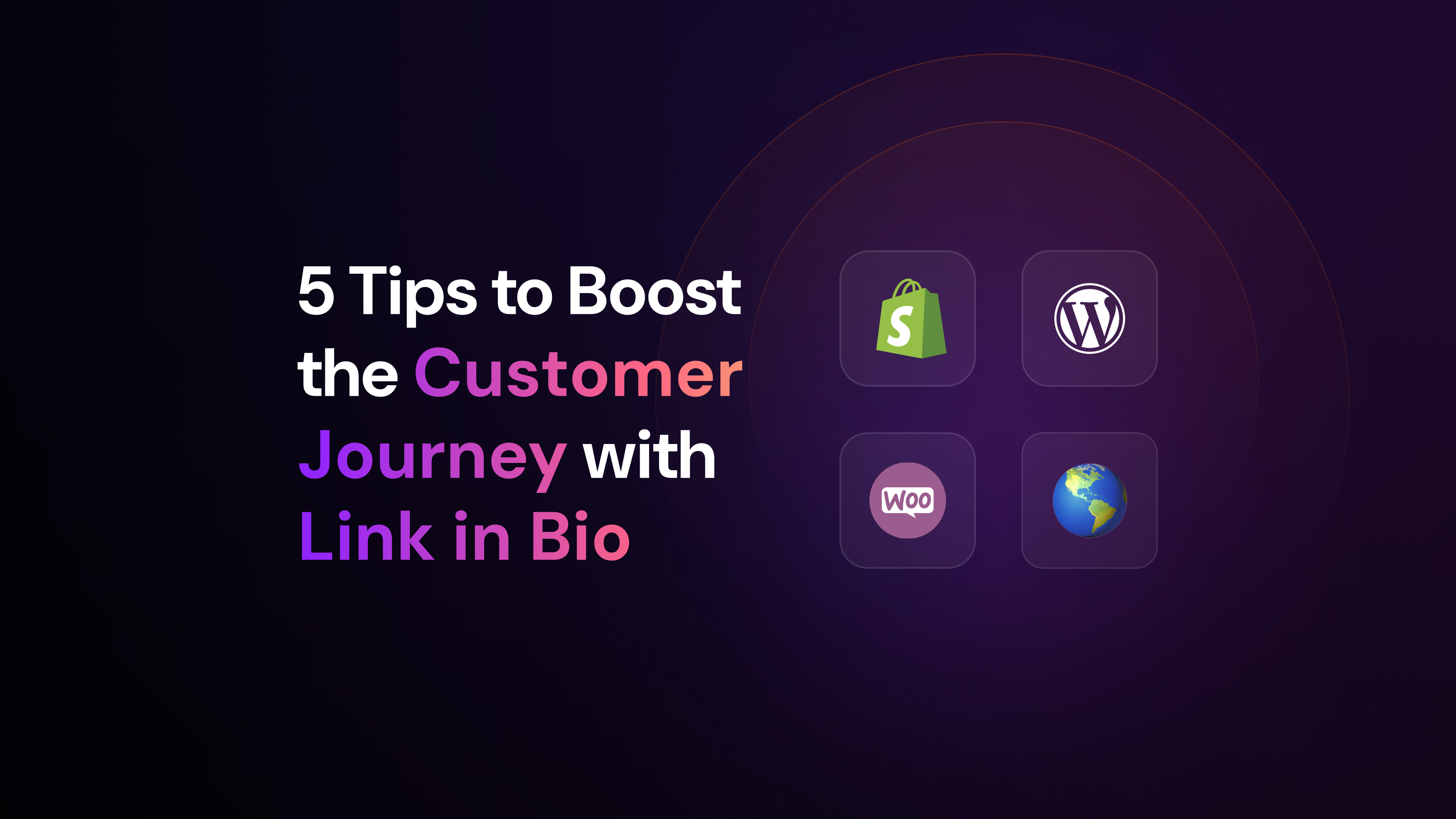

Customer engagement is the new way to think about building trusting relationships with customers. It’s broader than related concepts like customer loyalty. Encouraging customer engagement makes your company more valuable for the long term.
What Is Customer Engagement?
Customer engagement is how your customers interact with your brand over time. A high level of engagement means customers are interested in new products, online events, and content that you release. Highly engaged customers likely spend significant time visiting your website and interacting with you online.
At its highest level, customer engagement means you have fans who eagerly introduce other people to your brand. This level of passionate engagement makes marketing more efficient because word-of-mouth efforts enhance your campaigns.
Customer engagement is also closely related to other ways of relating to your customers: customer experience and customer satisfaction. Let’s explore how these concepts connect further below.
Comparing Customer Engagement Vs. Customer Satisfaction

Customer engagement and customer satisfaction partly overlap. It’s unlikely that a brand can achieve high customer engagement levels if satisfaction falls. The scope is a crucial point of difference between engagement and satisfaction.
Customer satisfaction often focuses on rating a purchase experience or customer service interaction. For instance, a customer satisfaction survey may ask buyers if their concern was thoroughly addressed when they asked for help.
In contrast, customer engagement goes beyond purchases and interactions with company staff. Customer engagement also considers if a person is acting as a brand ambassador. In addition, customer engagement examines how a person interacts with your online content and experiences.
Customer Engagement Vs. Customer Experience

Customer experience and customer engagement are also related. Both can reinforce each other to increase revenue, reduce service expenses and lift a brand’s long-term prospects. Perspective and emphasis are key differences between these two concepts.
Customer engagement assumes that the customer is an active participant. Moment by moment, the customer decides how much time and money they want to spend with your brand.
Customer experience, in comparison, brings together the company’s departments and capabilities to design a consistent, integrated experience. For instance, robust customer experience ensures offline and online interactions are aligned in copy, offers, and strategy.
A robust customer experience journey makes it far more likely that customer engagement will stay high. The opposite is also true. A dysfunctional customer experience will likely cripple efforts to foster ongoing customer engagement.
3 Ways Customer Engagement Boosts The Bottom Line
Building and sustaining a customer engagement program takes effort and resources. So, it’s reasonable to ask what return you should expect. The return on investment from strong customer engagement takes a few different forms.
1.Improves Marketing Effectiveness
A highly engaged customer base makes it easier to boost the effectiveness of your marketing in a few ways. Engaged customers are more likely to refer other customers – a growth channel that is free for you. In addition, highly engaged customers are more likely to share a steady stream of data about themselves and their preferences. This stream of first-party data makes it far easier to create personalized marketing campaigns which are proven to deliver excellent results.
2. Improves Product Development
Changing or launching an existing product takes time and effort. Fortunately, customer engagement can reduce the risk of product development missteps.
For example, you can ask your best customers for feedback on features and prototypes before launching them in large campaigns. In addition, early customer feedback can yield reviews, feedback, and other forms of social proof, which make it far easier to launch something new to the market.
3. Reduces Customer Service Costs
Highly engaged customers are often willing to provide help to other customers. For example, take a look at the forums dedicated to software.
It’s common to see experienced users provide tips and advice to other users on social websites like Stack Overflow. One should not expect customers to take on all customer service responsibilities, but every bit helps to ease the burden of customer service.
Customer engagement has the potential to boost profitability. It’s important to know whether or not your program is trending in the right direction.
7 Signs Of Healthy Customer Engagement
How do you know if your customer engagement efforts are working? The best way is to build a strategy and develop custom measures associated with that strategy. As a starting point, the following indicators will tell you if your customer engagement program is on the right track.
1. Your Loyalty Program Is Thriving And Growing
High levels of participation in loyalty programs are an excellent sign of customer engagement. If customers take the extra step to register in your program, activate offers, and so forth, they are engaged with your offers.
However, relying too heavily on a customer loyalty program can be misleading. A brand offering unusually lucrative rewards may see a short-term increase in loyalty program engagement. To provide a more balanced view, look at some of the other signs below.
2. Your Online Events Pull In Excited Participants
Look at the attendance numbers and quality of engagement in your digital events and experiences. It’s a good sign if you have a cadre of loyal customers who consistently join your events month in and month out.
You might measure the number of people who take action during live events (e.g., the number of clicks on your conversion cards using Arena Live Chat).
3. You Receive Positive Reviews
Positive reviews written directly by customers indicate that your customers like your product. In addition, a steady stream of positive reviews is an even better sign of a highly engaged customer base.
4. Customers Submit Feature Requests, Ideas & More
When customers reach out to ask for changes, such as feature requests in software or different colors in apparel, that is an excellent sign. Your brand can also encourage this type of engagement by seeking feedback in surveys, live chat sessions, and other venues.
5. You Recover Effectively From Most Complaints
This signal of effective customer engagement is associated with customer service. Simply put, it’s challenging to eliminate all customer complaints. However, a company that effectively responds to complaints promptly is more likely to retain content customers.
6. You Have An Active And Growing Referral Program
While this measure of engagement has drawbacks, it is an excellent sign of engagement. If you see consistent referral volume, that is an excellent sign of engagement.
7. Customers Are Interacting With Your Online Content
This sign of customer engagement is essential for publishers. A paying subscriber who never visits your website, downloads a podcast, or views a video is at a heightened risk of disengaging and leaving your community.
For non-publishers, interacting with your online content is also essential to track. A high level of engagement tells you that your content program is on the right track. In addition, interactions with your content are an excellent opportunity to generate first-party data.
Customer Engagement In Practice: The Customer Engagement Lifecycle
Lasting customer engagement is a lifecycle process leading to continuous improvement. Every time you go through the process, you can deepen customer relationships and trust.
1. Gather Data From Your Customers
Data gathered directly from your customers, also known as first-party data, is the foundation of customer engagement. When designing programs and initiatives for your customers, measuring your efforts and collecting feedback are vital.
The way you gather data from your customers also matters. Email and website analytics can automate some of this to see which pages and content drive opens, clicks, and user attention. In other cases, using surveys and other direct approaches to solicit feedback is wise.
2. Analyze Your Customer Data
Arena Personas (Beta) makes it easier to get a clear picture of your customer engagement across multiple channels like email, website, and chat interactions. Gathering all of that data in one place is the starting point. Your next step is to analyze the customer data. Use the following questions to get started:
- What customer engagement patterns are we seeing (e.g., the highest-value customers tend to attend webinars and other live experiences)?
- Are there any gaps or quality issues in the customer data (for example, do you need data from your customer relationship management app)?
- Does this data help us make better predictions about purchases, referrals, and other valuable actions?
3. Develop Customer Engagement Tests
Reviewing customer engagement data is interesting. However, the data on its own will not drive growth. It’s crucial to take some well-thought-out risks using customer engagement data.
The tests could be small in scope, like creating a test around marketing copy that succeeded with your website audience and rolling it out on display ads. Or it might be more involved, like adjusting incentives to encourage past customers to return and make more purchases.
4. Observe The Results And Iterate
Once you have a few marketing tests in mind, allow some time to pass to gather meaningful data. Unless you have an extensive customer base, thirty days are usually enough time to pass.
Once you have the new customer engagement data in, review your test. Ask yourself whether your assumptions are correct or need to be changed. Once you have gleaned whatever insights you can, iterate on the process and start the lifecycle process again.
Customer Engagement Strategies
There are several proven strategies that drive higher customer engagement. To boost (or launch) your customer engagement program, pick some strategies to delight your customers.
1. Launch (Or Enhance) Your Loyalty Program
A loyalty program is among the best ways to encourage ongoing customer engagement. Retailers, airlines, and other companies have proven the value of these programs for years. Yet, you don’t have to build a complex program to get started.
Your initial program could start by offering premium content or products to members first. Another approach is to offer a discount or another incentive to registered members.
2. Encourage The Right Behavior In Your Online Community
Customer engagement is ultimately built up through individuals interacting with your brand positively over time. When your online community starts, setting expectations with your audience is essential.
Executing this strategy will generally have two elements: positive and negative. The positive element is to look for highly engaged customers and praise their actions (e.g., like their comments, send thank you messages, and so forth). This praise will help to encourage your customers to keep up the excellent work.
The negative element is to have a set of ground rules and live up to them on your standard. For example, a brand may have a strict policy against hate speech, profanity, and other “not safe for work” content. If a community participant runs afoul of these rules, take appropriate action, such as sending them a private message to stop the behavior or potentially banning the person from your community if the negative behavior continues.
3. Invite Engagement Through Online Experiences
Creating the right environment is another way to boost customer engagement. Your website can potentially be the center of your brand’s online community. With Arena Live Chat, you can run live events from your website efficiently.
Offering a live chat experience to your customers is one of the best ways to grow relationships at scale and, what’s more, this kind of experience tends to be very popular with Gen Z… You might already have a chat in place for customer service. While helpful in solving problems, one-on-one customer service chat interactions do little to grow your community.
Instead, looking for ways to boost your community through live events where like-minded people can come together is more powerful. For example, you might invite your customers to join an “Ask me anything” online event with your CEO to bring a more human touch to your brand.
The Easiest Way To Lift Customer Engagement On Your Website
Customer engagement is good for the bottom line, makes marketing easier, and gives your customers a social experience. To bring your customer engagement strategy to life, it’s crucial to have the right technology.
Installing Arena Live Chat on your website only takes a few minutes. Discover more about building your online community with Arena.



